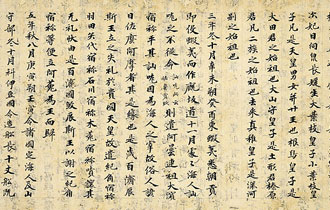Pages |
The Tokyo and regional press frequently reported Takahashi's anti-military rhetoric in this period (during one cabinet meeting for example, he told the army minister not to speak like an idiot). On another occasion, when told that a young officer had publicly shouted, "Bury Takahashi," he replied, "If all the lieutenants in the army shot me it would be too much." But such courageous stands against the rise of militarism were few, so few that the great Marxist economist, Ōuchi Hyōe, wrote that Takahashi's murder in February 1936 destroyed any hope of stopping the military.
This did not mean that war was inevitable in February 1936, but it meant that the chances were much greater than they had been before the coup d'état attempt of that month. The last opponents of autarky had been removed by murder or the fear of murder. Takahashi's successor as finance minister doubled the military budget in one year, Japan invaded China in 1937, and Japan was involved in a war it could not win. The invasion of China was not planned aggression-the war broke out over a skirmish between Chinese and Japanese troops in the suburbs of Beijing (why Japanese troops were there is another story). Japan's military leaders, caught up in their own nationalistic rhetoric, decided to use the incident to punish the Chinese armies in north China, because they believed that the Chinese soldiers could not possibly resist the Japanese, who were backed not so much by modern weaponry as by their Yamato damashii, that is, their "Japanese spirit." But the Japanese generals were wrong. In spite of unspeakable atrocities (or maybe because of them), the Chinese soldiers fought well and the Japanese military was never able to pacify China. One assumes Takahashi, if he could look down (or over?) from the Buddhist Western Paradise, would have shuddered when he saw what his countrymen were doing.
The story of the transition from aggression in China in 1937 to the attack on Pearl Harbor is a complex one that includes an alliance with Germany and Italy. This alliance of was one for "have nots," that is, the nations that felt they were excluded from full membership in the Western imperialist order. But you should not overlook the role the war in China played in the Japanese decision to go to war with Britain and the United States. Since Japan's generals could not accept the fact that the Japanese imperial army could not defeat Chiang Kai-shek's and Mao Tse-tung's soldiers in an army-versus-army conflict (how could the emperor's army not defeat the benighted Chinese?), they had to find another explanation for Japan's inability to pacify China. The answer they came up with was Anglo-American support of China. The way to defeat China was to cut off its supply lines from the West. In other words, move into Hong Kong and Southeast Asia. There were other reasons that Japan moved into French Indo-China, and then decided to attack the American, British, and Dutch colonies, but one important reason was to outflank China, to cut off its connections with the allied powers.
When Japan took its first step southward and moved into the French colony in Indo-China in the summer of 1941, the United States answered by placing an embargo on the export of scrap iron and petroleum to Japan. Takahashi's prophecy about Japan's dependence on Western raw materials began to come true. Without the needed petroleum and iron, Japan had to look elsewhere: British Malaya for iron ore and the Dutch East Indies for oil. This led to the decision to attack Southeast Asia, and the United States bases in the Philippines and Hawaii to protect the Japanese navy's flank. One mistaken step led inexorably to another.
Pages |











